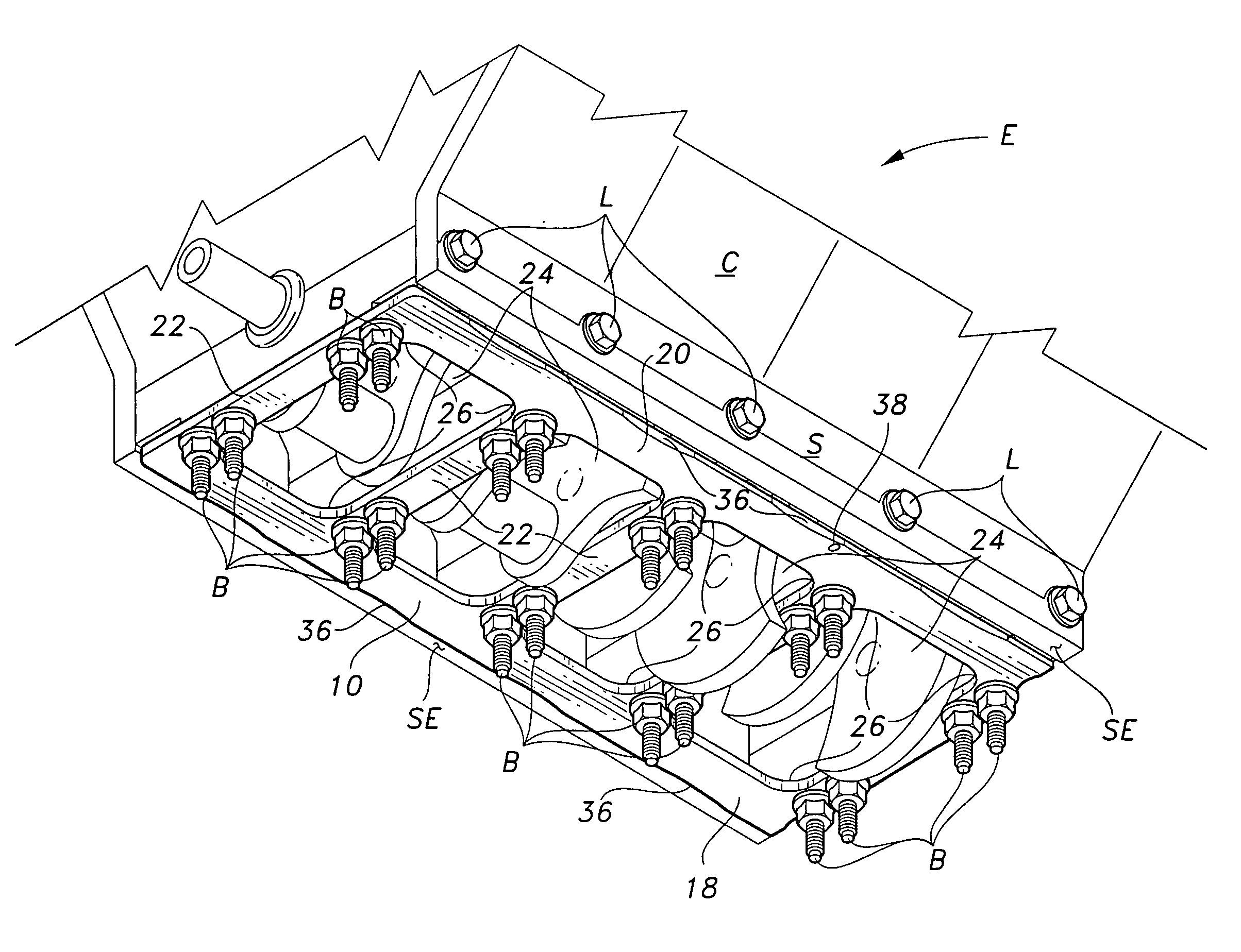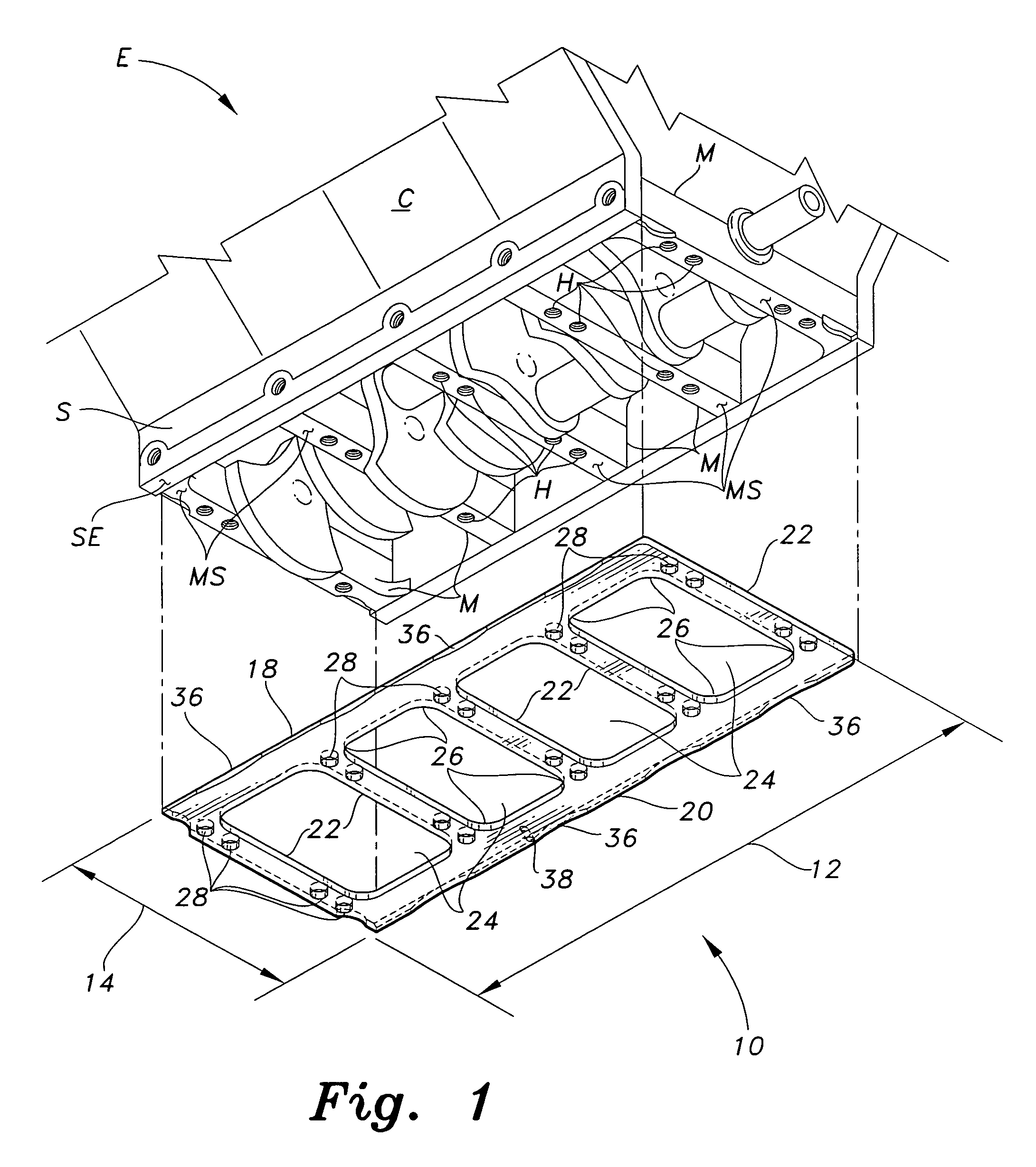Reinforcement plate for a reciprocating engine
a technology of reinforcement plate and reciprocating engine, which is applied in the direction of positive displacement engines, machines/engines, mechanical equipment, etc., can solve the problems of excessive oil consumption, piston and/or oil control rings flying, and liners will distort in stock engines, so as to reduce bearing friction, reduce relative movement, and reduce fatigue of the lower portion
- Summary
- Abstract
- Description
- Claims
- Application Information
AI Technical Summary
Benefits of technology
Problems solved by technology
Method used
Image
Examples
Embodiment Construction
[0043]The present invention comprises a reinforcement plate for the bottom end (i.e., crankshaft location) of a reciprocating engine. The present reinforcement place bolts to the main bearing caps of the engine, further immobilizing the caps relative to one another and restricting the slight relative motion which would otherwise occur due to engine operation. The result is an engine block which is more resistant to fatigue stresses, as well as better alignment of the main bearings.
[0044]FIG. 1 provides a bottom and right side exploded perspective view of the present plate 10, separated from the bottom end of a conventional reciprocating engine E. The engine E may be of any conventional configuration, but the present plate 10 is well adapted for installation in a General Motors LS-1 type engine. These engines have a V-8 configuration and a nominal displacement of 5.7 liters, or 350 cubic inches. The LS-1 engine is used in innumerable high performance applications, and as such is prov...
PUM
 Login to View More
Login to View More Abstract
Description
Claims
Application Information
 Login to View More
Login to View More - R&D
- Intellectual Property
- Life Sciences
- Materials
- Tech Scout
- Unparalleled Data Quality
- Higher Quality Content
- 60% Fewer Hallucinations
Browse by: Latest US Patents, China's latest patents, Technical Efficacy Thesaurus, Application Domain, Technology Topic, Popular Technical Reports.
© 2025 PatSnap. All rights reserved.Legal|Privacy policy|Modern Slavery Act Transparency Statement|Sitemap|About US| Contact US: help@patsnap.com



